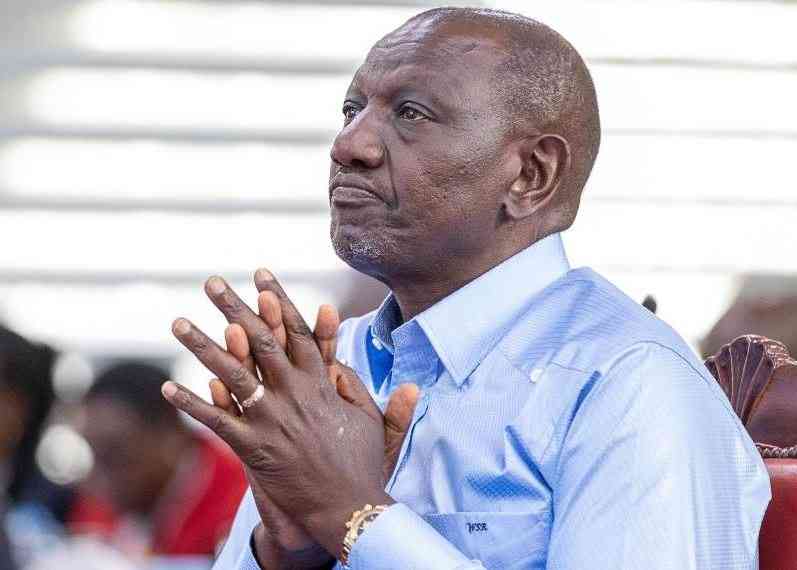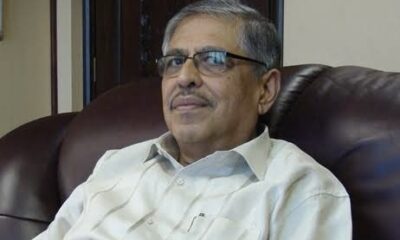Politics
The Broken Covenant: How Ruto’s Youth Promises Became His Political Nightmare
The question is no longer whether Ruto can fulfill his youth promises—it’s whether he can survive their consequences.

President William Ruto’s sweeping campaign pledges to Kenya’s youth have transformed from electoral gold into political quicksand, fueling the very protests that now threaten his administration’s stability.
The irony is striking.
The man who rode to power on the shoulders of young Kenyans with promises of economic transformation and inclusive governance now faces their wrath in the streets.
What began as a political romance between Ruto and the youth has soured into a bitter divorce, with consequences that reverberate through every corner of his presidency.
When Ruto took the campaign trail in 2021 and 2022, he spoke the language of hope to a generation suffocating under unemployment and economic despair.
His pledges were ambitious, specific, and seemingly tailored to address every youth concern.
The centerpiece was his October 2021 promise to inject Sh100 billion into the economy, creating four million jobs for young people.
It was a number that captured imaginations and votes. He promised to waive Kenya Revenue Authority tax penalties for youth-owned businesses and prioritize payment of their pending bills.
In June 2022, he formalized these commitments through a Youth Charter targeting ten key intervention areas: business development, health, creative and digital economies, agriculture, education, sports, leadership and governance, security, and the blue economy.
The charter promised easier access to government credit, startup incubation centers, and comprehensive legal and tax reforms affecting youth businesses.
Perhaps most memorably, Ruto pledged the Financial Inclusion Fund—the “Hustler Fund”—designed to offer affordable, instant loans to young entrepreneurs.
It was positioned as the great equalizer, the vehicle that would transform Kenya’s economic landscape by empowering the ordinary citizen.
The transition from campaign rhetoric to policy implementation has been brutal.
The Hustler Fund, launched with great fanfare and a Sh50 billion budget, quickly became a cautionary tale about the gap between political promises and practical governance.
The fund’s fundamental flaw was apparent from the start: an average disbursement of Sh500 was woefully inadequate for any meaningful business venture.
By September 2024, government data revealed that more than half of borrowers had defaulted on loans totaling Sh11 billion.
The situation became so dire that in May 2025, the government announced plans to write off Sh6 billion in bad loans borrowed by 10 million Kenyans.
The silence is deafening. Ruto, who once championed the Hustler Fund in every public forum, no longer mentions it in his speeches—a political amnesia that speaks volumes about the program’s failure.
The promise of four million jobs remains a mirage. The Kenya Country Economic Transformation Outlook 2025 report paints a stark picture: only 20 percent of the one million young people joining the workforce annually secure formal employment.
The specter of a “lost generation” looms large.
While Ruto has pointed to the Affordable Housing Programme, digital jobs, and the ‘Kazi Majuu’ labor migration initiative as solutions, the impact remains minimal.
His Wednesday claim that the housing program has created 320,000 jobs is met with skepticism by analysts and citizens who see little evidence of meaningful change in their daily lives.
The Federation of Kenya Employers’ data confirms what young Kenyans feel viscerally: youth, who comprise more than 35 percent of the population, face the highest unemployment rates in the country.
The youth discontent extends far beyond economic grievances.
The Perceptions on the June 2025 Gen Z Protests report identifies a constellation of issues: abductions, extrajudicial killings, exclusion from decision-making, weak leadership, and erosion of the rule of law.
This represents a fundamental breach of trust. Ruto had promised to end police brutality, arbitrary arrests, and harassment of young people, vowing speedy prosecution of perpetrators.
Yet rights groups document that more than 140 people have been killed during demonstrations since 2023, many of them young protesters.
The promise of inclusive governance—30 percent of appointive positions for youth and county administrators drawn from youth ranks—remains largely unfulfilled.
Young Kenyans feel not just economically marginalized but politically invisible.
University funding has emerged as another flashpoint.
The Youth Charter’s promises to increase Higher Education Loans Board allocations in line with rising living costs, waive penalties and interest on existing student loans, and introduce grace periods for repayment until graduates find jobs have not materialized.
Students, parents, and university administrators have criticized the new funding model as inadequate, creating additional barriers to higher education access at a time when young people need it most.
The transition from NHIF to the Social Health Insurance Fund (SHIF) has sparked public outcry over higher deductions and unclear benefits, contradicting Ruto’s promises of improved healthcare access, availability, and affordability.
His pledge to revive agro-processing factories as a job-creation strategy has also faltered.
The Auditor General reports that County Aggregation and Industrial Parks have stalled in at least 13 counties, plagued by funding shortages, unresolved land issues, and procurement irregularities.
Deputy President Kithure Kindiki’s Tuesday acknowledgment that recent youth-led protests had “jolted the government into rethinking its job creation strategies” is perhaps the most honest assessment of the administration’s predicament.
The very constituency that propelled Ruto to power now poses the greatest threat to his political survival.
Ruto’s Wednesday defense that the unemployment problem predates his administration rings hollow to young people who voted for change, not explanations.
They remember his promises, not his predecessors’ failures.
The transformation of Ruto’s youth promises from political assets to political liabilities represents more than policy failure—it reflects a fundamental misunderstanding of generational expectations in modern Kenya.
Young Kenyans are digitally connected, globally aware, and increasingly unwilling to accept political rhetoric as a substitute for tangible change.
The protests that now shake his administration are not just about economic grievances but about accountability, justice, and the very nature of democratic governance.
They represent a generation’s refusal to be taken for granted.
For Ruto, the challenge is existential. The youth who once chanted his name in rallies now chant for his accountability in the streets.
The promises that once elevated him now threaten to bury his presidency. In politics, as in life, the chickens have come home to roost.
The question is no longer whether Ruto can fulfill his youth promises—it’s whether he can survive their consequences.
The answer may well determine not just his political future, but the trajectory of Kenyan democracy itself.
Kenya Insights allows guest blogging, if you want to be published on Kenya’s most authoritative and accurate blog, have an expose, news TIPS, story angles, human interest stories, drop us an email on [email protected] or via Telegram
-

 Business2 weeks ago
Business2 weeks ago‘They’re Criminals,’ Popular Radio Presenter Rapcha The Sayantist Accuses Electric Bike Firm Spiro of Fraudulent Practices
-

 Business1 week ago
Business1 week agoIt’s a Carbon Trading Firm: What Kenyans Need to Know About Spiro’s Business Model Amid Damning Allegations of Predatory Lending
-

 Business1 week ago
Business1 week agoManager Flees Safaricom-Linked Sacco As Fears Of Investors Losing Savings Becomes Imminent
-

 News1 week ago
News1 week agoWoman Accused in High Defamation Blames AI As Case Exposes How Mombasa Billionaire Mohamed Jaffer Allegedly Sponsored Smear Campaign Linking Joho’s Family To Drug Trafficking
-

 Investigations2 weeks ago
Investigations2 weeks agoDisgraced Kuscco Boss Arnold Munene Moves To Gag Media After Expose Linking Him To Alleged Sh1.7 Billion Fraud
-

 Africa2 weeks ago
Africa2 weeks agoDisgraced Oil Trader Idris Taha Sneaks Into Juba as Empire Crumbles
-

 Investigations2 weeks ago
Investigations2 weeks agoFraud: How Sh235 Million Donor Cash For Nyamira Residents Was Embezzled Through Equity Bank Under Governor Nyaribo’s Watch
-

 News2 weeks ago
News2 weeks agoSerial Gold Fraudster Walks Free in Sh8.1 Million Fake Gold Scam Acquittal










